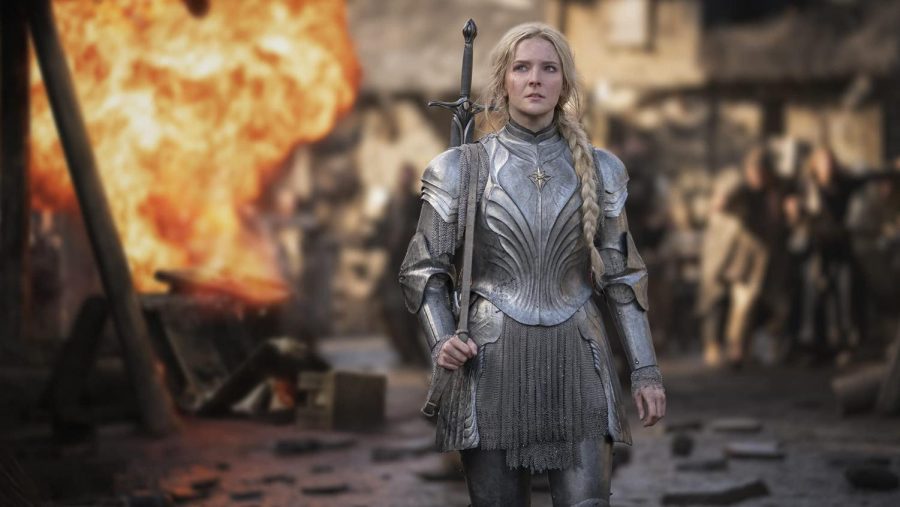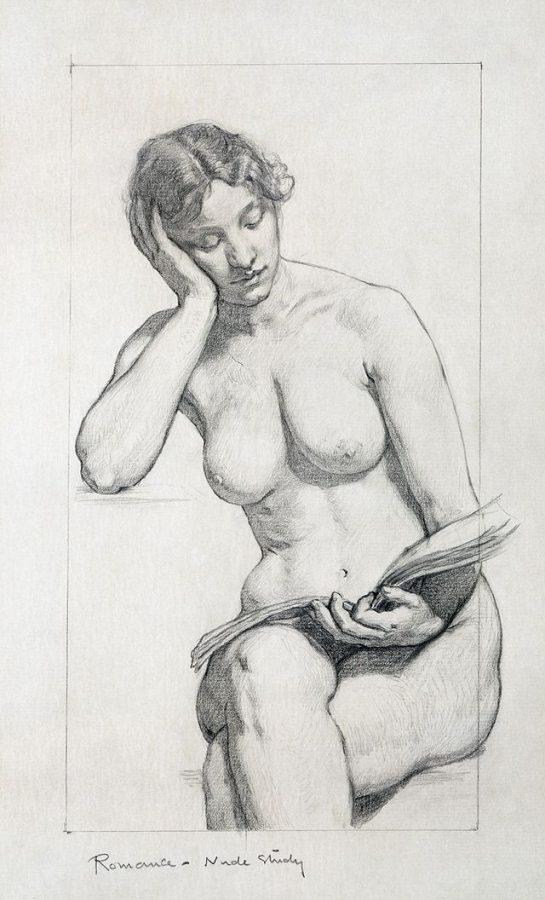“Lord of the Rings” is a monolith in the fantasy genre across mediums. The world that J.R.R Tolkien constructed over his lifetime is presented as the history of a forgotten time and it is rich with lore and masterful writing. Based on the book series is Peter Jackson’s film trilogy and his adaptation of “The Hobbit,” which brought middle earth to the silver screen and cemented it as a cornerstone of popular culture.
The rights to the source material to continue this legacy are highly sought after but have not been utilized to any great extent since “The Hobbit: Battle of the Five Armies” debuted in theaters in 2014. With the lull in content, the rights were sold for around $250 million to an unlikely studio: Amazon. The company dedicated an exorbitant sum of money -an additional $465 million- towards production for its new Middle Earth show. Despite the grand sum of money, the rights that Amazon ultimately got were quite specific: the “Lord of the Rings” appendices, and “Concerning Hobbits,” the books’ prologue.
But what exactly are these appendices? Tolkien constructed a vast world with thousands of years of detailed history in his novels. In order to help convey that information to the reader without bloating his story or requiring a degree in Middle Earth History, he convinced his publishers to include an abridged version of the pertinent lore at the back of “Return of the King”, the third part of Lord of the Rings. Within these pages is a cliff notes version of “The Silmarillion”, containing the Númenórian history and family trees that fleshed out the Second Age of Middle Earth, the time before Frodo began his epic journey.
With these appendices, Amazon was able to begin work on a show for this time period, portraying the world as it fell into darkness at the hands of Sauron, the almighty evil, and his forces. The show covers the efforts of Galadriel, an elf, to uncover the return of Sauron and convince the worlds of elves and men to unite against the resurgent forces of evil. She is not readily believed though, as the elves insist that they are in an age of peace and the Númenórians have isolated themselves on their island nation.
With the show now being released with a new episode each Friday, there is the question of whether Amazon was able to succeed in making a good adaptation of the Middle Earth legacy. The answer, at least for many, is complicated.
Amazon decided to condense nearly 1500 years of history down into a five season show. The intention is to portray a self-contained story that can maintain the same cast of characters for its duration. This is a prudent production decision, but it results in the omission, merger or general alteration of many characters and events from “The Silmarillion” that die-hard Tolkien fans were eager to see properly represented.
For example, the show opens in the time just before the titular Rings of Power were forged in Second Age 1500, yet features Tar-Míriel as the Queen Regent of Númenór, a figure who would not be born until Second Age 3117. According to University of Vermont student Amelia Bachand, a sophomore involved in Tolkien studies, “the person who was actually ruling Númenór during the Ring’s forging and the beginning of the subsequent war was Tar-Telperiën, one of the most straight-up feminist characters that Tolkien wrote.”
Bachand elaborated that Telperiën “was the second ruling queen of Númenór . She was famed for her pride, refused to marry, and was [very] queer-coded.” Telperiën was entirely cut from the show, and the Númenórian family tree significantly shortened. As stated, Tar-Míriel, the queen in the show, did not even ascend to the throne through succession. Rather, the throne was stolen in a forced marriage to her first cousin, Pharazôn, who is presently depicted as a loyal advisor. Given that Pharazôn is a very important figure in later events in Middle Earth lore, it makes sense that Telperiën and Míriel might be merged as characters. It unfortunately does both characters a disservice, rendering their individual traits mute, and their struggles void.
The Númenórians are now not only mistrustful of the elves, but have fully adopted an isolationist policy, contradicting their imperialist nature seen in the lore. Isildur, future King of Gondorhas already been born, and his family’s status has seemingly been greatly diminished.
Importantly, Sauron, in order to fit the condensed narrative, has been the subject of many alterations. Notably, Sauron has not yet been spotted in relation to the elven smith Celebrimbor and the Rings of Power. He was instrumental in their conception, so with Celebrimbor already at work, his current absence is questionable.
This precedent suggests that many events in the following seasons will have to be condensed as well with the War of the Elves and Sauron and the Battle of the Last Allience likely to overlap.
With so many drastic changes, how could “Rings of Power” possibly succeed? For some it will not, but that is not for lack of merit. The show isn’t explicitly a bad adaptation, it is simply not a complete representation of the history. While the films are hailed as masterpieces and cherished by fans far and wide, they were famously despised by Tolkien’s son Christopher; and similarly the films skipped and condensed events, albeit to a lesser degree.
Adaptation does not suggest total accuracy. It is the alteration of content to make it work in another medium, or to grow beyond what it originally was. As much as fans would love a true-to-lore representation of events, it is unlikely that such a sweeping tale could be told in an interesting enough fashion to captivate content-inundated audiences.
When separated from the controversy of its content, the show is successful in many ways. The visual effects are superb and prove for some breathtaking scenes. The costumes, wardrobe and casting are contentious amongst fans, but are still largely at home within the visual narrative being presented. The dialogue is predominantly well-written and the scenes generally have a satisfactory flow despite the slow pace of the show. It has also effectively brought greater diversity to Middle Earth.
Nicholas Silva can be reached at [email protected].


















